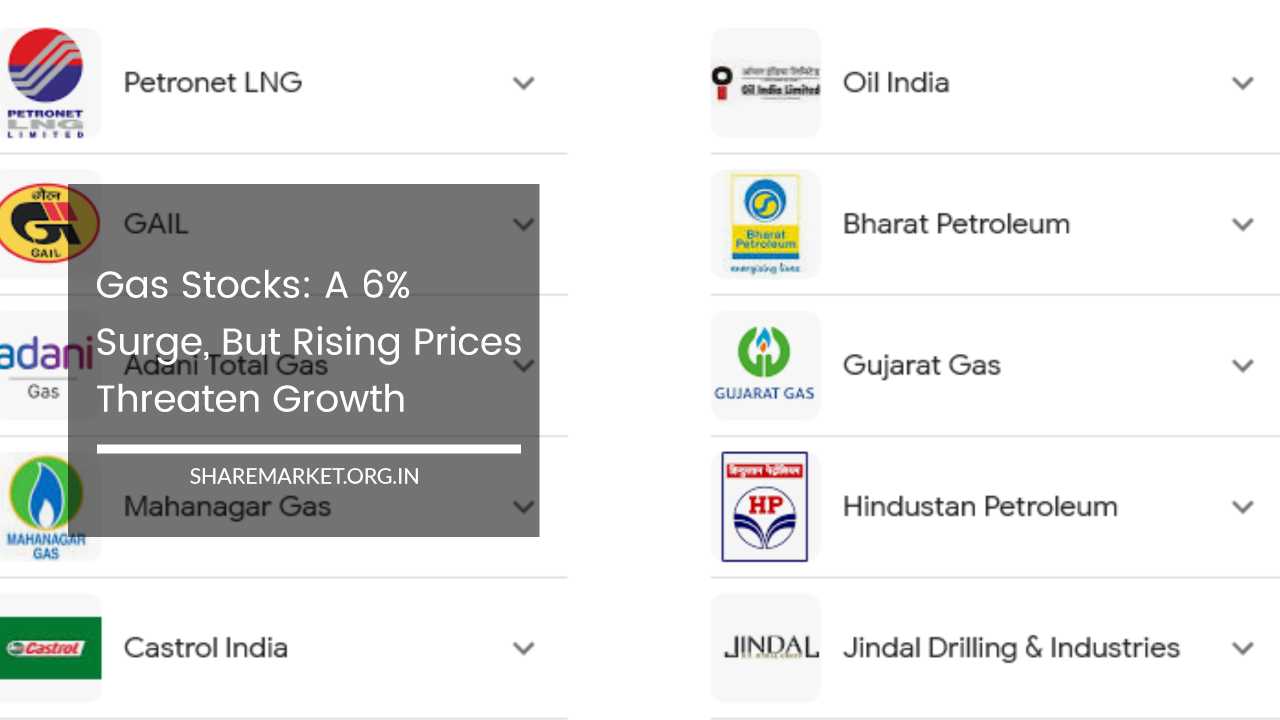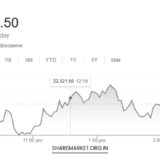Gas Stocks: A 6% Surge, But Rising Prices Threaten Growth

Gas Stocks
Gas Stocks: A 6% Surge Amidst Concerns of Rising Crude Prices
The intricately woven fabric of the energy market often experiences fluctuations influenced by a myriad of factors.
In this narrative, we explore the recent surge of up to 6% in gas stocks on September 6th and its underlying causes, particularly the impact of rising crude oil prices in the global market.
A Glimpse of Gas Stocks
Gas stocks play a crucial role in the energy sector, providing a vital source of energy for industries and households alike.
The price of domestic natural gas in India has been intricately linked to the country’s crude oil basket since April, and it undergoes monthly adjustments.
This linkage is significant because it intertwines the fate of gas stocks with the broader global energy market dynamics.
The Surge in Gas Stocks
On September 6th, gas stocks witnessed an impressive surge of up to 6% during intraday trading. This rally in stock prices was particularly notable for several key players in the gas industry.
For instance, shares of Petronet LNG saw a significant increase, trading at Rs 242, reflecting a remarkable uptick of 5.8%.
Similarly, Indraprastha Gas Limited exhibited a gain of 2.03%, while Gujarat Gas witnessed a rise of 1.41%. GAIL was not far behind, showing a rise of 1.22%, and Adani Total Gas displayed a modest increase of 0.58%.
The Crude Oil Conundrum
However, amidst this positive surge in gas stocks, the looming shadow of rising crude oil prices in the global market has emerged as a cause for concern.
Crude oil prices, particularly represented by Brent crude, experienced a surge beyond a 10-month high, exceeding $90 per barrel.
This upward trajectory in crude oil prices has been sustained, with Brent crude prices escalating by more than 6.5% over the last seven days.
The catalyst for this surge in crude oil prices can be traced back to the decision by major oil-producing nations, including Saudi Arabia and Russia, to extend supply cuts until December.
While this move was intended to stabilize oil prices, it also raised concerns about potential storage constraints during the winter season.
Challenges in the Gas Industry
Beyond the broader energy market dynamics, the gas industry is facing additional challenges. Workers at Chevron’s Wheatstone and Gorgon LNG plants in Australia initiated a limited strike from September 7th.
This strike action has the potential to impact exports, potentially affecting around 24.5 million metric tonnes (approximately 88 million metric standard cubic meters per day) of combined capacity at both terminals.
Despite this temporary setback, the outlook for liquefied natural gas (LNG) prices appears promising in the near to medium term.
ICICI Securities suggests that gas prices are likely to remain within a narrower range in FY2024 compared to FY2023. However, an escalating dispute involving workers may lead to a short-term spike in LNG prices.
Potential Implications for Gas Distribution Companies
While the surge in gas stocks is a positive development for investors, it’s important to consider potential implications for gas distribution companies.
The increase in gas prices, particularly if sustained, may exert pressure on the margins of these companies. This, in turn, could impact the upward trajectory of their stock prices.
Understanding Natural Gas Price Adjustments
It’s worth noting that earlier this month, the Indian government raised the price of natural gas for September.
The price was adjusted to $8.60 per metric million British thermal units (MMBTU), up from $7.85 in August.
However, the price of gas sourced from nominated gas fields of ONGC and Oil India was maintained at $6.5 per MMBTU.
This adjustment in natural gas prices is part of the government’s initiative to link the price of domestic natural gas to India’s crude oil basket, a policy change implemented since April.
Under this new framework, the price of domestic natural gas undergoes monthly revisions, aligning it more closely with global crude oil price fluctuations.
Final Thoughts
The surge of up to 6% in gas stocks on September 6th reflects the dynamism of the energy market, where stock prices are intricately tied to global factors such as rising crude oil prices.
While this rally is encouraging for investors, the challenges posed by escalating crude oil prices and potential labor disputes in the gas industry introduce elements of uncertainty.
Gas distribution companies must navigate these challenges while striving to maintain healthy margins.
The delicate balance between rising gas prices and profit margins underscores the complexity of the energy market and the need for stakeholders to remain vigilant and adaptable.
As we look ahead, the relationship between gas stocks and global energy dynamics will continue to evolve, influenced by a multitude of factors.
Investors and industry observers will closely monitor these developments, seeking opportunities and mitigating risks in the ever-changing landscape of the gas sector and the broader energy market.

















